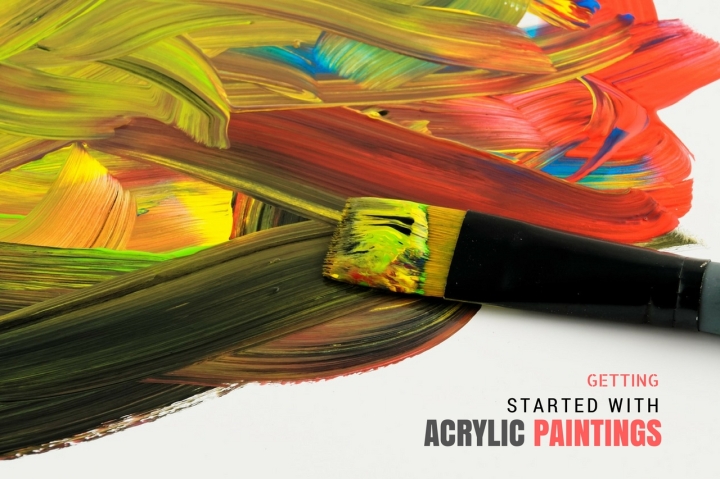
Introduced in the year 1955, acrylic paints are comparatively younger than their older cousins oils and watercolours. However, the art material is highly versatile, which allows it to be used for achieving brilliant outcomes without having to invest a lot of effort. If you are just getting started in the world of modern and contemporary acrylic painting, then there are certain easy tips that you can follow in order to use the materials effectively:
The Right Brush
When you are at the art section of a retail store, you will find that there is an ocean of paintbrush choices for you to pick from. However, barely a handful among them would be perfect to use for mastering different acrylic painting techniques. Your best bet would be a brush with stiff bristles for working with thick paint requirements, and another having soft bristles to achieve watercolor effects. Gradually, you might have to purchase brushes of different sizes as you start getting better.
Support
One of the most ideal supports for working on any kind of acrylic painting is a canvas. If you do not wish to worry about stretching, priming and sizing the canvas in future, buy one that is pre-primed and pre-prepared in order to save money & time. As far as the material of the canvas is concerned, linen is probably the best, but you can also go for cotton duck, since it’s affordable and easily available.
Palettes
Since acrylic dries very quickly compared to other materials, using a plastic or wooden palette won’t do the trick for you. There are special palettes available in the market which have been designed to stay wet for a long time. They are lightweight, durable and practical. Alternatively, you can even get disposable palettes, which are more than ideal for beginners.
Choosing The Paint
Acrylic paints are water-based and can therefore be mixed with aqua to obtain various consistencies. You can even utilise different paint mediums for varying the consistency of the colors, while leaving their luminosity intact. Prior to any of that, however, you have to buy the right kind of paint.
Apart from these things, there are also some extras that you will be needing to get started. They include the following:
- Kitchen paper – for adding texture and doing post clean-up
- Eraser & pencil – to sketch and rub out mistakes
- Sponges – helps in experimenting with textures
Thus, make sure you get these things ready before you begin creating your own acrylic masterpiece.
